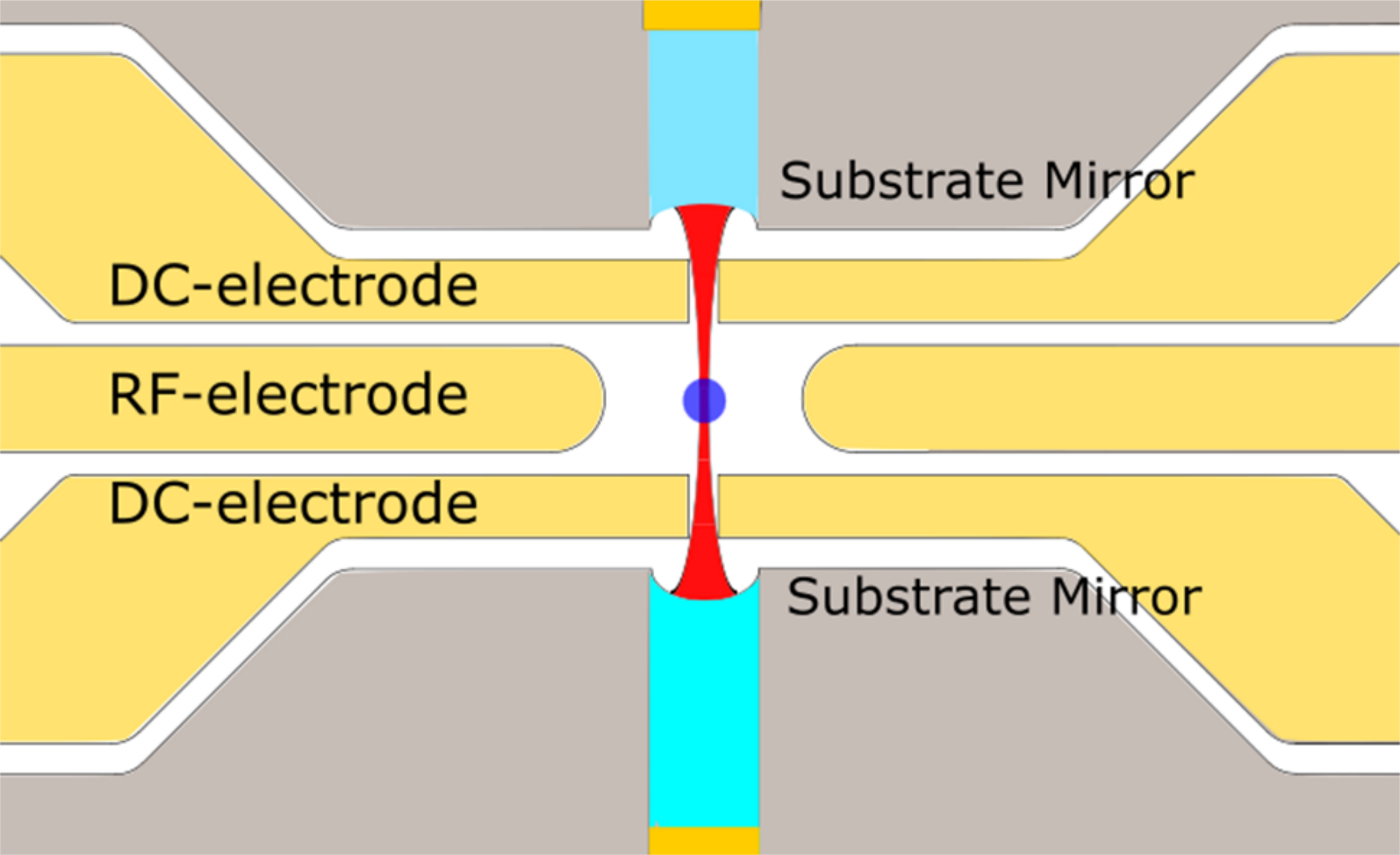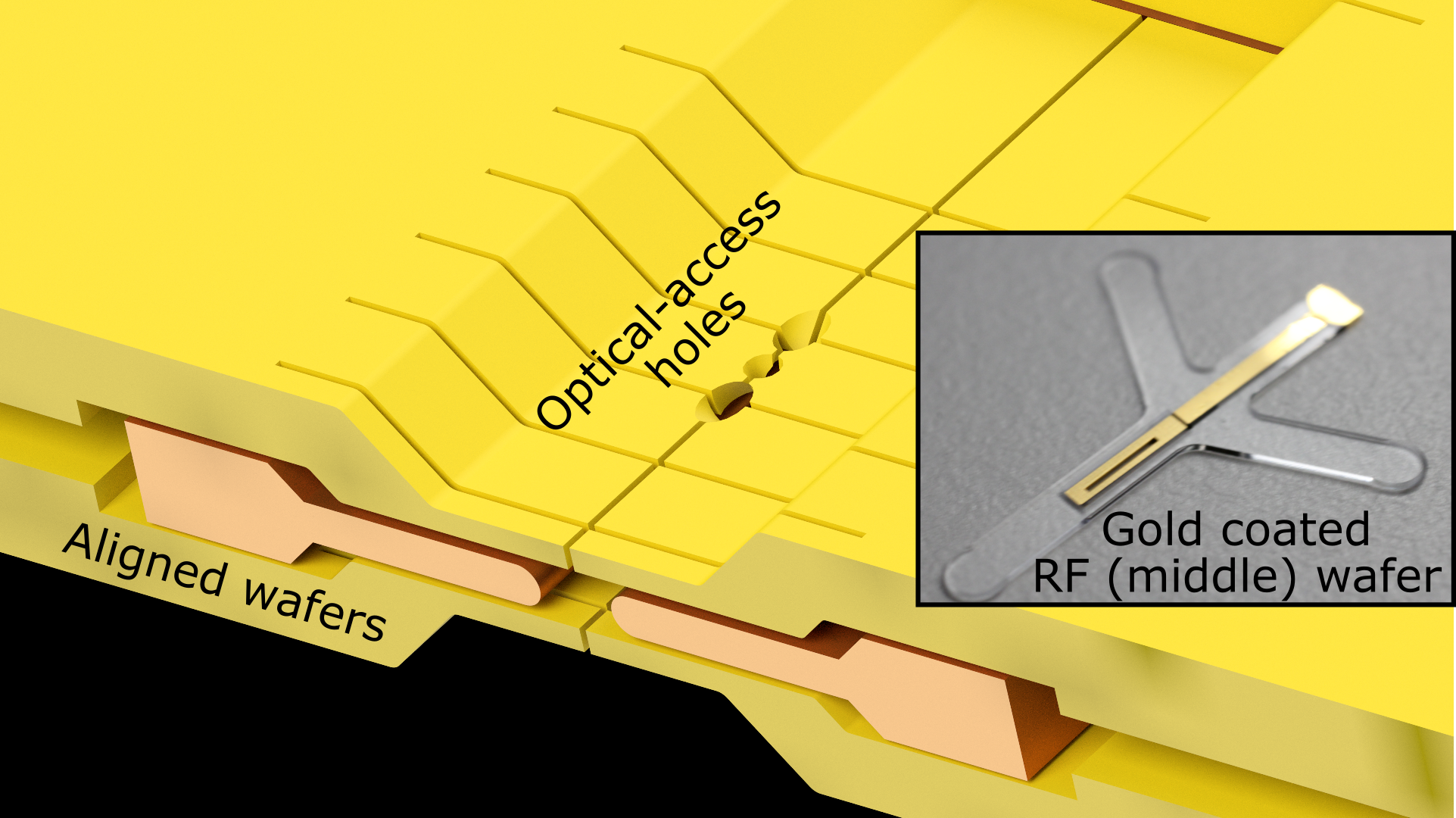Cavity Quantum Electrodynamics
Trapped ions are among the most promising architectures to realize quantum information processing. They offer some of the highest gate fidelities and longest coherence times. As a consequence, basic quantum algorithms have already been demonstrated. However, despite much progress with this architecture, the route to a scalable system is still unclear.
In this project we aim to scale trapped-ion quantum computing beyond a small number of ions in a single trap. This will be realized by interfacing ions at the level of a single quantum with optical fields that can be distributed by optical fiber i.e. connecting spatially separated ion traps that contain a manageable amount of ions.
The major challenge in making a light-matter interface is realizing a small mode-volume (mirror distance around 300 micrometers) cavity with dielectric mirrors close to the ion themselves. The latter cause stray fields that disturb the carefully tailored electric fields of the ion trap and as a result lead to detrimental heating or ion loss. In order to mitigate this, we are taking advantage of new laser-assisted chemical etching methods to make well-aligned 3-dimensional electrode structures which offer good electrical shielding.
In the initial phase we will combine these with a fiber-cavity whose mirrors are fabricated directly on the fiber tip via CO2 laser ablation. In the long term we are working on approaches to integrate cavities into the trap electrodes themselves.
Beyond the fiber interface, the trap offers segmented electrodes such that ion transport along the axis of the trap can be controlled dynamically and several ions can be trapped simultaneously. This allows for a small number of ions in the trap that can be used for basic computational tasks. Together with the photonic interface, our trap will form a basic building block for a larger scale quantum network used for distributed computing. A schematic and picture of a trap wafer is shown in the figure below.
This work is supported by external grants from the SNF as well as the QT Flagship program of the European Commission.


